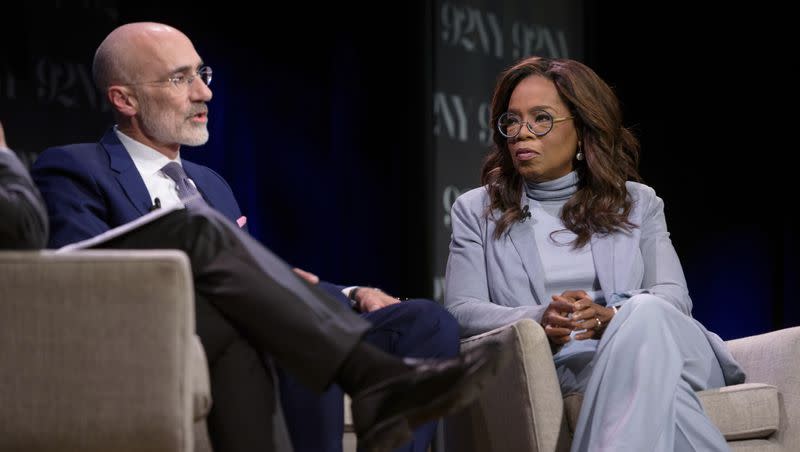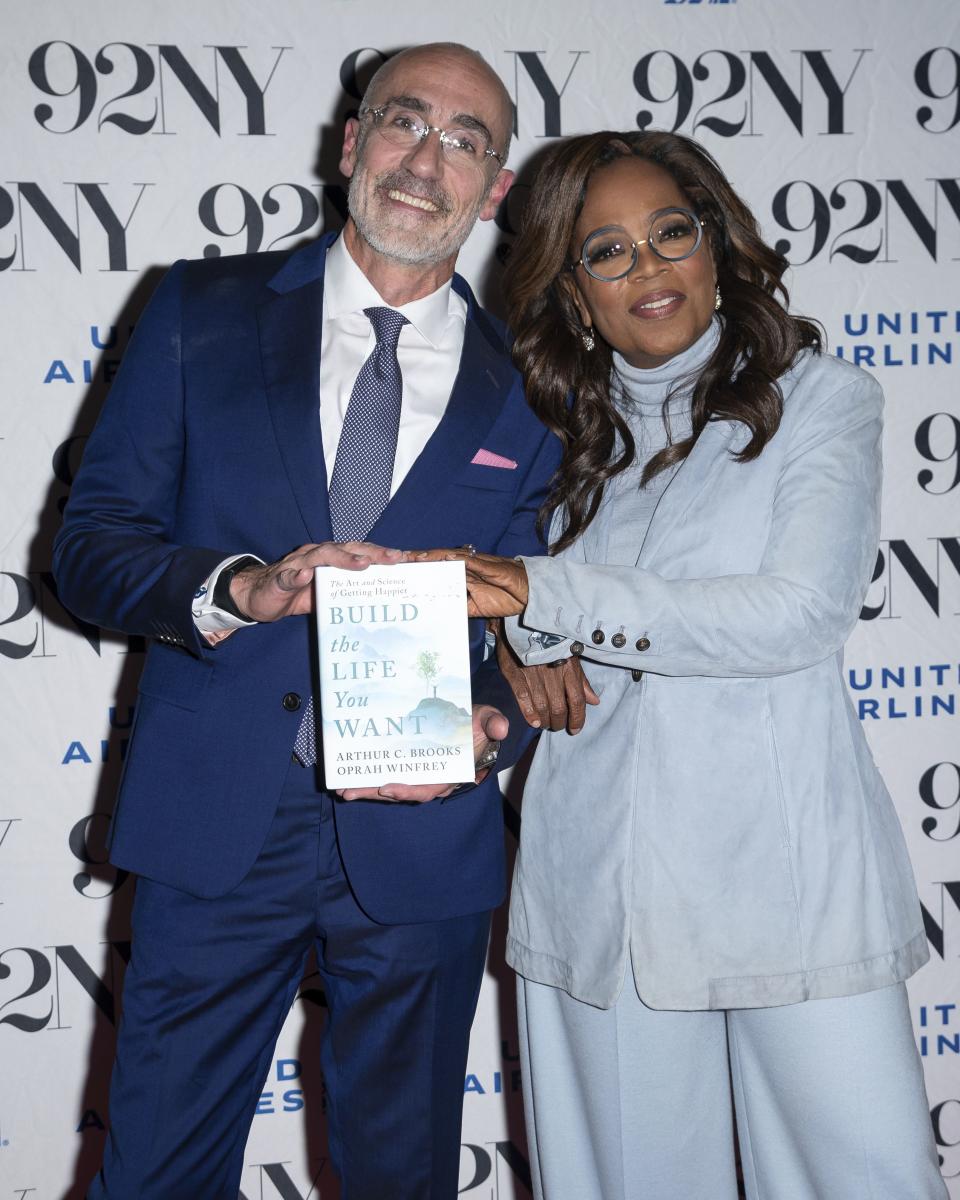Arthur Brooks and Oprah Winfrey’s recipe for a happier life

- Oops!Something went wrong.Please try again later.
- Oops!Something went wrong.Please try again later.
Is there a recipe to be happy? No, actually. But there are recipes to be happier, say Arthur Brooks and Oprah Winfrey in their new book “Build the Life You Want: The Art and Science of Getting Happier.”
First of all, drop the idea that we can achieve a state of “happy” and stay there, and that we can avoid unhappiness. Neither is true. If the secret to total happiness existed, it would be big business — sold online, taught in every school. But it isn’t, they say, because “happiness is not a destination. Happiness is a direction.”
Does knowing that achieving “complete happiness” in this life is impossible lighten your load? It can take the pressure off of those of us who wonder what is wrong with us because we are not happy all the time.
The Professor of Happiness
Recipe ingredients
Sticking with the analogy of a recipe, there are some “macronutrients” we need. Those are enjoyment, satisfaction and purpose.
Enjoyment is different than pleasure. “Enjoyment takes an urge for pleasure and adds two important things: communion and consciousness.” Pleasure is easier, they write, but it’s fleeting and solitary. Think about addiction: All addictions involve pleasure on some level, but not enjoyment.
Brooks and Winfrey define satisfaction as the thrill you feel after you accomplish a goal you’ve been working on — and, it doesn’t come without work and sacrifice. For example, if you study hard and get an A on a test, that’s satisfying. If you cheat to get the same grade, you likely don’t get any satisfaction. It’s one of the reasons that cutting corners is such a bad strategy, they say. It ruins your ability to feel satisfied — and it puts us on the “hedonic treadmill,” constantly seeking the next hit of dopamine-induced pleasure.

The third “macronutrient” is the most important: purpose. “Without purpose ... we are utterly lost, because we can’t deal with life’s inevitable puzzles and dilemmas. When we do have a sense of meaning and purpose, we can face life with hope and inner peace.” Holocaust survivor Viktor Frankl drew inspiration from German philosopher Friedrich Nietzsche: “He who has a why to live can bear almost any how.” People who have a strong sense of purpose and meaning in their lives often find more purpose and meaning in their suffering.
Here’s what’s important to know: Joy and sorrow can coexist. Happiness and unhappiness, happiness and struggle can and do coexist.
Related
Emotional caffeine
Caffeine, the most widely used drug in our society, acts by plugging into adenosine receptors. Adenosine tells us we feel tired, so when caffeine takes its spot, we are prevented from feeling drowsy.
Emotional caffeine, then, is the process by which we substitute one emotion that we don’t want to feel (anger at the rude driver that just cut us off) for an emotion we do want to feel (compassion for the driver who might be having the worst day of their life). Just like the caffeine we ingest, however, emotional caffeine is not a permanent substitute. We are still going to feel anger, sadness, fear and disgust, but we can also learn to substitute them so that we act the way we want, not the way we feel in the moment.
Four pillars
There are over 38 million results on Google for “happiness hack.” There are books, articles, podcasts and YouTube videos on how to get happier. The best social science research, though, can be boiled down to four pillars: family, friendship, work and faith.
No family is perfect, write Brooks and Winfrey, so let’s get to work building our imperfect families. Families can often bring the highest highs and lowest lows. They are love and conflict mashed together. Ignoring conflict is not healthy or useful — conflicts generally don’t “die of old age,” write the authors. Some tips for happier families include to stop trying to read each other’s minds, don’t ask family members to change their values, don’t treat family members as “emotional ATMs,” practice forgiveness and be honest.
Friendships that are deeply real make up the second pillar of building a happier life and account for almost 60% of the difference in happiness between individuals, regardless of how introverted or extroverted they are. Friendships can be ruined, though, if they are seen as purely transactional.
The third pillar for a happier life is meaningful work. To be happier, we need to find intrinsic rewards from our work. There is no “one right path” to a meaningful career, since we are all unique, but we all can find meaning in our work. A couple of caveats: Your work is not your identity and “work addiction” is a real thing.
Finally, the fourth pillar is faith. Not confined to a specific religion, the science on faith is “crystal clear,” write the authors. “Transcendental beliefs and experiences aid dramatically in our efforts to get happier.” Those beliefs help us focus outside ourselves, build compassion and feel gratitude.
Finally, the most important building block of all, the one that supports each pillar and enriches each practice: love.
Here’s to getting happier while also being OK with unhappiness.
Holly Richardson is the editor of Utah Policy.

